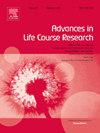Trends in intergenerational coresidence in Taiwan: Age, period, and cohort analysis, 2000–2020
IF 3.4
2区 社会学
Q1 Medicine
引用次数: 0
Abstract
In the context of ongoing social and demographic changes, eldercare and living arrangements have become increasingly challenging in many aging societies, including Taiwan. Historically, high levels of coresidence between parents and adult children were largely upheld by filial piety in Taiwan. However, the declining influence of filial traditions has been accompanied by shifts in intergenerational coresidence (IC) patterns. Although tracing how coresidence has evolved is key to understanding family dynamics in East Asian contexts, studies have produced mixed results, largely due to the age-period-cohort (APC) identification problem. To address this gap, this study draws on longitudinal data from the Panel Study of Family Dynamics Survey (2000–2020) and applies an adapted hierarchical APC (HAPC) model to disentangle patterns of parents' coresidence with children across APC trends within a multilevel framework. The analysis reveals that the age effect follows a U-shaped pattern with notable gender differences—women experience a milder decline and an earlier resurgence in IC, along with cohort variations. Among the pre-boomer cohort (1935–1945), coresidence tends to decline, specifically among women, without a clear U-shape, whereas the boomer cohort (1946–1963) sees a rise in IC around age 60. These findings elucidate the complex interplay between time-varying factors and IC as it unfolds across individual life courses within the broader family life cycle. While filial traditions remain influential, deviations from traditional coresidence patterns suggest changes in intergenerational reciprocity and highlight the growing importance of children’s circumstances on IC.
台湾世代共居趋势:年龄、时期与世代分析,2000-2020年
在持续的社会和人口变化的背景下,老年人的照顾和生活安排在许多老龄化社会变得越来越具有挑战性,包括台湾。从历史上看,在台湾,父母和成年子女之间的高度同居在很大程度上是由孝道维持的。然而,孝道传统影响的减弱伴随着代际共居模式的转变。虽然追踪同居如何演变是理解东亚背景下家庭动态的关键,但由于年龄-时期-队列(APC)识别问题,研究结果好坏参半。为了解决这一差距,本研究利用了家庭动态调查小组研究(2000-2020)的纵向数据,并应用了一个适应的分层APC (HAPC)模型,在多层次框架内解开父母与子女共同居住的模式。分析显示,年龄的影响遵循u型模式,性别差异显著——女性的IC下降幅度较小,复苏时间较早,同时存在群体差异。在前婴儿潮一代(1935-1945)中,同居倾向于下降,特别是在女性中,没有明显的u型曲线,而婴儿潮一代(1946-1963)在60岁左右的时候,同居倾向有所上升。这些发现阐明了时变因素与IC之间复杂的相互作用,因为它在更广泛的家庭生命周期中展现在个人生命过程中。虽然孝道传统仍然有影响,但与传统同居模式的偏离表明代际互惠的变化,并突出了儿童环境对亲子关系的日益重要。
本文章由计算机程序翻译,如有差异,请以英文原文为准。
求助全文
约1分钟内获得全文
求助全文
来源期刊

Advances in Life Course Research
SOCIAL SCIENCES, INTERDISCIPLINARY-
CiteScore
6.10
自引率
2.90%
发文量
41
期刊介绍:
Advances in Life Course Research publishes articles dealing with various aspects of the human life course. Seeing life course research as an essentially interdisciplinary field of study, it invites and welcomes contributions from anthropology, biosocial science, demography, epidemiology and statistics, gerontology, economics, management and organisation science, policy studies, psychology, research methodology and sociology. Original empirical analyses, theoretical contributions, methodological studies and reviews accessible to a broad set of readers are welcome.
 求助内容:
求助内容: 应助结果提醒方式:
应助结果提醒方式:


